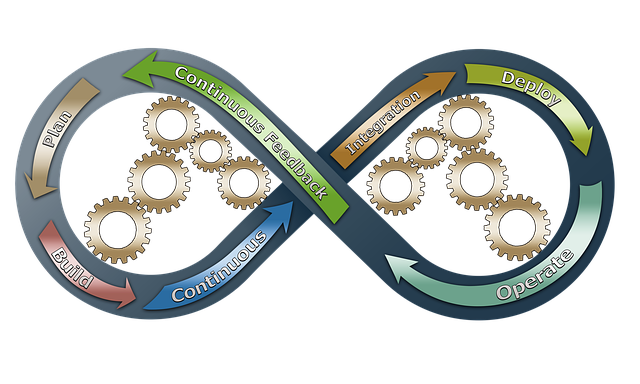[responsivevoice_button]
Agile Transformation is the evolution process an organization undergoes in order to deliver better, faster solutions while adapting to the constant change of an increasingly complex and uncertain business environment. Most organizations recognize the benefits of agile but aren’t sure how to create or encourage Agile “behavior” or when to introduce frameworks and practices. It involves a mind-set change in all people in an organization which can be uncomfortable for most. Commonly the emphasis in an Agile Transformation is on the “Agile” part and there is little focus on the “transformation”. When the companies focus on the details of “Agile” they often struggle or fail. The emphasis should be on “transformation”. Agile is important, but it is not the make or break focus of an Agile Transformation.

The following are transformation issues, no matter what kind of Agile Transformation you have in mind (Scrum, Kanban, Lean, XP or other team level practices OR SAFe, LeSS, DAD or other scaling practices):
- Company philosophy or culture at odds with core Agile values: Cultural change is critical to any ongoing successful Agile adoption by small and larger businesses because people feel comfortable using traditional ways and resist any change. Moreover, it is critical that Agile must co-exist with traditional development approaches. The agile adoption can change the nature of some roles; particularly those of line management and traditional project management, people who are used to making decisions and directing work, whereas agile requires a more democratic process, with all team members participating. It’s very important that people in such positions are allowed to influence the nature of their new roles and understand the value they can continue providing. Without such transparent communication, they can become blockers to the adoption of agile but when properly involved, they can be positive agents of change.
Recommendation: Should start small, experiment with pilots and prototypes. Ensure key stakeholders are involved early in the process and have a common understanding of Agile concepts and benefits. Plan a concise, contextualized strategy for Agile transformation, a foundation roadmap, its desired outcomes, how to measure and communicate the progress and success to the team. When others in the Organization realize the success, will also start supporting and contributing in Agile adoption. - Lack of management support: It’s usually ‘middle management’ who has lack of trust for a new process, lack of understanding of changing roles and a lack of buy-in to the new process. Successful Agile implementations need support from the team members, management, and executives to embrace new ways of completing work and collaborating. In most enterprise wide agile implementation efforts, it is common for teams and executive to have great enthusiasm for the effort. However, in the absence of a strong Agile transformation plan, project and program managers or functional ‘resource’ managers often feel isolated mainly because their roles are no longer clear. This results in a general resistance and creates additional barriers to further Agile adoption and success.
Recommendation: Executive leaders should model the behavior they want their management team to display. Lead by being an example and live the values they want them to adopt, and help middle managers understand how they fit into the changing organization. Embrace not only from top down but bottom up that a “mind shift” needs to happen to embrace the new levels or collaboration, communication and transparency. - Resistance to change: Another barrier is resistance from people who feel they don’t need to change and unwilling to follow Agile. A lot of the “management” functions start to move, change or go away as an organization becomes Agile. One of the changes is that “Line management” becomes less important and “hands-on” as people and teams become empowered; Technical managers become less important as teams become more self-directed and define their own technology spaces; Service managers become less involved as people move from silo IT to DevOps and Project managers become less powerful as the firm moves from a project to a product mindset.
Recommendation: Not having alignment on the aspiration and value of an agile transformation could be barrier. Employees also need incentive to make a change and how will it benefit them. No matter what your role most people need to know “what is in this for me?” it is human nature when dealing with change. Everyone must see the value in the change before it can happen. Incentive is the piece that can either build consensus or build resistance among staff. Incentives can be tangible such as monetary, or intangible such as personal achievement or prestige. - External pressure to follow Legacy systems and processes: This is especially common in large enterprises, where some teams follow Agile approaches and other parts of the organization operates within traditional waterfall approaches, sometimes working under the umbrella of the same portfolio or program. In such cases, the Agile teams are usually being grafted into the existing traditional portfolio and project management methodology, and with teams that are working against different schedules, trying to deliver on a specific project. This can be a barrier in successful Agile adoption.
Recommendation: Should aim to get business units aligned through training to ensure that managers of different areas understand the implications of interacting with teams that do work in the new way. The ultimate goal should be to break dependencies across the entire organization. Change your metrics, identify new metrics that move away from measuring and tracking lines of codes, quality issues and reports as success factors and deliverables. Focus on “working product” and value delivery and this should be greatest measure of success in an Agile environment. And to achieve this, facilitate continuous collaboration between the business and the development team. Having the traditional teams understand even though they cannot change their architecture on a dime there are things that they can do to move them in the right direction, have them start small and work their way over to a full agile adoption. - Insufficient training: One of the necessary elements is to know what skills are needed and do existing staff members have expertise or training in what they are being asked to do. The lack of skill, appropriate resources and training may lead to anxiety.
Recommendation: Should know what in-house resources are readily available and if they are suitable. What resources are needed and how will you get them. Conduct trainings for all stakeholders and the core teams. Coach teams through real delivery to refine understanding. Not only is the initial training essential but on-going training to keep the skills within a team and to assist the team in evolving to a high performing group of people. - Inadequate experience with Agile approaches: For most new Agile teams, members are typically inexperienced in applying basic Agile practices and unfamiliar with successful agile transformations. In such cases, there is a high likelihood for misinterpretation of Agile principles and fallback to old practices. An Agile process will expose problems and issues with the project more quickly than a more traditional development process; addressing such and what to do about those problems and issues is also not always very clear to new and inexperienced Agile teams. Challenges can make the difference for the team’s success or failure with Agile.
Recommendation: Understand that inexperienced teams need more formal process and guidance. Include an experienced Agile resource to coach on the team that has strong experience practicing Agile methods, and successful experience with Agile teams. Keep team members stable on a team, if possible, move towards a “Fund the team” model versus “fund the project” where you are constantly ramping up new teams. This will help teams mature and develop a cadence and well-defined velocities that provide better predictability to product owners and stakeholders. Invest in making training and continued coaching guidance available for the teams to consult. Encourage a learning organization by launching a community of practice. - Lack of vision and Agile priority: There must be a vision and reason why the change is needed. Creating an “agile friendly” culture requires a firm vision, senior business and IT executive support, strong governance and a clear roadmap. Mostly, companies find themselves limiting agile to pilots within a small part of the organization, with a small set of leaders. While the pilot is typically successful, its impact is restricted to a few teams and not treating agile as a strategic priority that goes beyond pilots eventually gets killed.
Recommendation: Transparency is vital to the effective teamwork that underpins agile development. The vision and action plan for change should be clear, developed by a representation of all stakeholders and should be communicated to the team. The lack of vision and open communication leads to confusion. A great practice is to not only review the vision with the team in the beginning but go back to review it as work progresses ensure the changes that naturally occur are accounted for and the team(s) still understand the direction and priority needs to help deliver the greatest value.

By Harleen Flora; PhD (Computer Science), PMP, MSP, PRINCE2, ITILv3, CSM, Agile PM, SAFe5 Agilist, Lean Six Sigma Black Belt https://www.linkedin.com/in/harleenflora/
